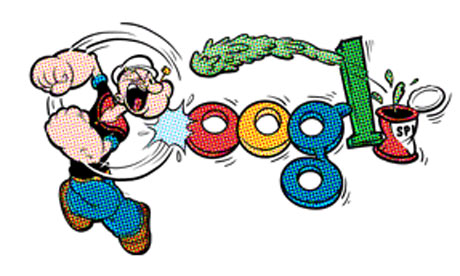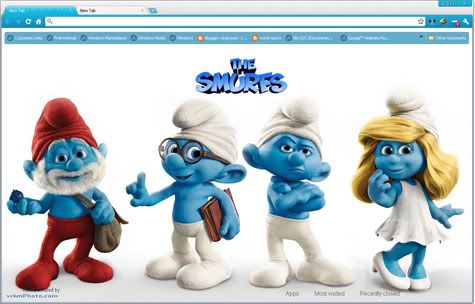Source:- Google.com.pk
Welcome to PakEarn.com (Facebook Photo Posting Jobs)
What a Cartoon! is an American animation showcase series created by Fred Seibert for Hanna-Barbera Cartoons which aired on Cartoon Network. The project consisted of 79 short cartoons, intended to return creative power to animators and artists, by recreating the atmospheres that spawned the great cartoon characters of the mid-20th century. Each of 79 short cartoons mirrored the structure of a theatrical cartoon, with each film being based on an original storyboard drawn and written by its artist or creator.
The series first aired on February 20, 1995, and were promoted as World Premiere Toons. During the original run of the shorts the series was retitled as The What a Cartoon! Show until the final short aired August 23, 2002. The project served as the launching point for multiple successful Cartoon Network series, including Dexter's Laboratory, Johnny Bravo, Cow and Chicken, The Powerpuff Girls, Courage the Cowardly Dog, Mike, Lu & Og, Sheep in the Big City, Whatever Happened to... Robot Jones?, Codename: Kids Next Door, The Grim Adventures of Billy & Mandy and Megas XLR as well as a precursor to Fox's Family Guy. The series is influential for birthing a slew of original Cartoon Network hits and helping to revive television animation in the 1990s. Once it had several original series, those became the first Cartoon Cartoons.
A character (or fictional character) is a person in a narrative work of arts (such as a novel, play, television series or film).[1] Derived from the ancient Greek word kharaktêr, the English word dates from the Restoration,[2] although it became widely used after its appearance in Tom Jones in 1749.[3][4] From this, the sense of "a part played by an actor" developed.[4] Character, particularly when enacted by an actor in the theatre or cinema, involves "the illusion of being a human person."[5] In literature, characters guide readers through their stories, helping them to understand plots and ponder themes.[6] Since the end of the 18th century, the phrase "in character" has been used to describe an effective impersonation by an actor.[4] Since the 19th century, the art of creating characters, as practised by actors or writers, has been called characterisation.[4]
A character who stands as a representative of a particular class or group of people is known as a type.[7] Types include both stock characters and those that are more fully individualised.[7] The characters in Henrik Ibsen's Hedda Gabler (1891) and August Strindberg's Miss Julie (1888), for example, are representative of specific positions in the social relations of class and gender, such that the conflicts between the characters reveal ideological conflicts.[8]
In fiction writing, authors create dynamic characters by many methods, almost always by using their imagination. Jenna Blum in The Author at Work described three ways of creating vivid characters:[26]
a magic character comes into the author's head and "lives there", sometimes "dictates their story" to the author.[26]
a borrowed character is created by taking an emblematic quality or character trait from a real person, plugging that trait into a fictional situation, and then the author uses imagination to transform the character into a unique construct.[26]
a made-up character is created from the "ground up", often starting from expediency as a two-dimensional creation which the author then tries to get to know better, sometimes by adding trouble and conflict.[26]
The study of a character requires an analysis of its relations with all of the other characters in the work.[9] The individual status of a character is defined through the network of oppositions (proairetic, pragmatic, linguistic, proxemic) that it forms with the other characters.[10] The relation between characters and the action of the story shifts historically, often miming shifts in society and its ideas about human individuality, self-determination, and the social order.
Google Cartoon Character Google Images Search Flowers Logo Advanced Tattoos Upload Flowers Roses Valentines Day Download Gravity

Google Cartoon Character Google Images Search Flowers Logo Advanced Tattoos Upload Flowers Roses Valentines Day Download Gravity

Google Cartoon Character Google Images Search Flowers Logo Advanced Tattoos Upload Flowers Roses Valentines Day Download Gravity

Google Cartoon Character Google Images Search Flowers Logo Advanced Tattoos Upload Flowers Roses Valentines Day Download Gravity

Google Cartoon Character Google Images Search Flowers Logo Advanced Tattoos Upload Flowers Roses Valentines Day Download Gravity

Google Cartoon Character Google Images Search Flowers Logo Advanced Tattoos Upload Flowers Roses Valentines Day Download Gravity

Google Cartoon Character Google Images Search Flowers Logo Advanced Tattoos Upload Flowers Roses Valentines Day Download Gravity

Google Cartoon Character Google Images Search Flowers Logo Advanced Tattoos Upload Flowers Roses Valentines Day Download Gravity

Google Cartoon Character Google Images Search Flowers Logo Advanced Tattoos Upload Flowers Roses Valentines Day Download Gravity

Google Cartoon Character Google Images Search Flowers Logo Advanced Tattoos Upload Flowers Roses Valentines Day Download Gravity

Google Cartoon Character Google Images Search Flowers Logo Advanced Tattoos Upload Flowers Roses Valentines Day
Download Gravity
No comments:
Post a Comment